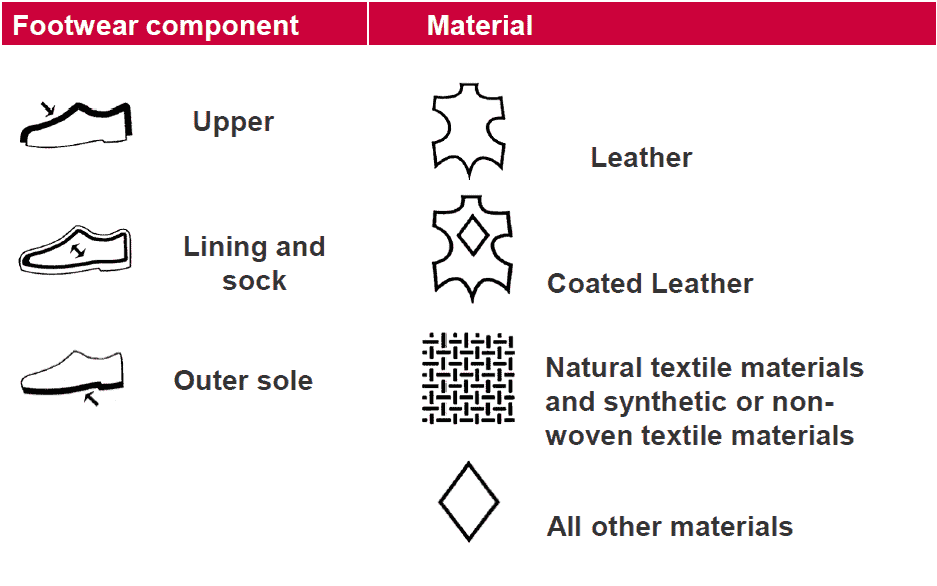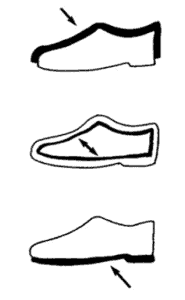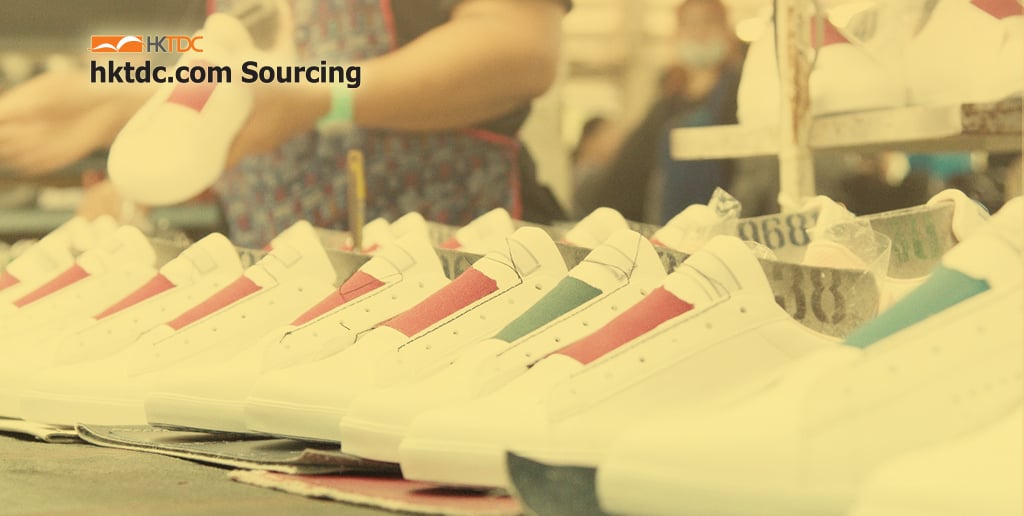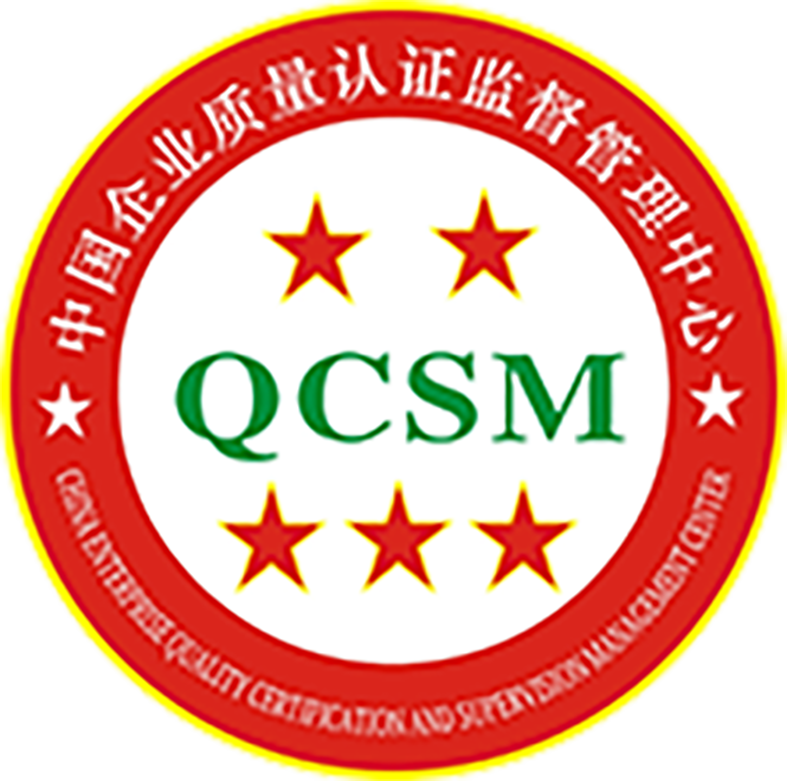Footwear has a diverse category, with different types of footwear such as fashion footwear, sports footwear, baby footwear that use a wide range of materials and require a number of different production processes. This makes footwear labeling, testing & quality assurance highly demanding to bring the product to market with high-quality performance.
This article will walk you through 7 footwear labeling requirements for US and European markets so that you can have a clear outline of what to include for your products.

1. Country of origin labeling
Requirements of FTC and US Customs:
- Imported and domestic products must identify the country where they were processed or manufactured. Products made entirely in the U.S. of U.S. made materials must be labeled “Made in U.S.A.”
- Consult US Customs regarding correct country of origin.
- The country of origin must always be on the front side of the label with company identification such as the name of the manufacturer, distributor, wholesaler, or ultimate retailer or RN number.
- The information must be sewn in a label or printed/stamped on both shoes’ accessible sections such as tongue lining, lining or outer sole, etc.
2. Leather Labeling
Guides for Select Leather and Imitation Products:
- These guides apply to the manufacture, sale, distribution, marketing, or advertising of all kinds or types of leather or simulated leather, including footwear.
- Imitation or simulated leather – If all or part of a product is made of non-leather material that appears to be leather, the non-leather material must be disclosed on the retail packaging. The general nature of the material as something other than leather should be disclosed as for example Not leather; Imitation leather; Simulated leather; Vinyl; Vinyl coated fabric; or Plastic.
- Embossed or processed leather – The kind and type of leather from which an industry product is made should be disclosed when all or part of the product has been embossed, dyed, or otherwise processed so as to simulate the appearance of a different kind or type of leather. For Example: Top Grain Cowhide With Simulated Pigskin Grain.
- The disclosure must be of such conspicuousness and clarity as to be noted by consumers casually inspecting the product. The disclosure must be in close proximity to the product identification.
3. Registered Identification Number (RN)
Textile labels must identify either the company name or Registered Identification Number (RN) of the manufacturer, importer, or another firm marketing, distributing, or otherwise handling the product.
- The prefix “RN” is part of the Registered Identification Number and must precede the numerals on the label (The RN is simply another way to identify your company on labels, instead of using the full company name)
- If the company name is used, it must be identified in full under which the company is doing business or “Housemark”.
- Footwear is exempt unless something is stated about fiber or they are wool.
4. Fur Products Labeling
16 CFR 301, Fur Products Labeling Act
- Any product that is manufactured, imported, or sold that contains fur must comply with the labeling requirements under the Fur Products Labeling Act (FPLA). Fur products – made either entirely or partly with fur — must have a label disclosing.
- If there is real fur. It must state the fur’s origin with the words For example, “Mexican Raccoon
New York General Business Law § 399-AAA
- For goods sold in New York via stores, catalog, and the internet containing faux fur: Faux fur must be listed on a permanent label, or a temporary tag or a sticker. For example Faux Fur Lining
5. UTAH Stuffed Product Labeling
- This is applicable to footwear (slippers, after-ski booties) with filling materials and sold in the state of Utah Filling materials shall be tagged and labeled.
- Filling materials shall be tagged and labeled in conformance with the Federal Textile Fiber Products Identification Act. Actual fiber analysis will be conducted to verify the filling fiber content.
- Verify Presence
- Name of manufacturer, distributor, wholesaler, or ultimate retailer or RN number
- Generic name of the filling type and the % by weight in order of predominance. (If only one fiber must list 100%). Sectional Disclosure is required for Upper & Sole sections of the slipper/bootie if applicable.
- Country of origin
6. CPSIA Tracking Label
In the event of a recall this tracking label must allow the manufacturer and the ultimate purchaser of the children’s product to determine the:
- Product manufacturer
- Location of production
- Date of production
- Any cohort information or other identifying characteristics such as batch or lot number
EU Footwear Labelling
1. EU Directive 94/11/EC
- Shoes sold in the EU must be labeled clearly to inform the customer what the main component parts are made of.
- The Directive covers labeling for the materials used in footwear, including parts sold separately.
- Excludes safety footwear, second-hand footwear, and toy footwear.


- Upper: This is the outer face of the structural element which is attached to the outer sole.
- Lining and sock: These are the lining of the upper and the insole, constituting the inside of the footwear article.
- Outer sole: This is the bottom part of the footwear article, which is subjected to abrasive wear and attached to the upper
- Leather: Material made from the skin of an animal by tanning or a similar process.
- Coated Leather: Leather where the surface coating applied to the leather does not exceed one third of the total thickness of the product but is in excess of 0.15 mm
- Textile: Natural textile materials and synthetic or nonwoven textile materials.
- Other Material: All kind of plastic, Wood, Hem.

- Analyze the covering at least 80% of the surface area or 80% of the volume of the outer sole must be labelled. If no material accounts for at least 80%, information should be given on the two main materials used.
- The label on the shoe can have words (as listed above) or pictograms. If using words they must be in the language of the country in which the shoes are sold.
- Securely attached the labels which must be visible, accessible and can be attached to just one shoe of the pair by stitching, printing, embossing or sticking.
Recommendations from Bureau Veritas:
Apart from labeling, it is compulsory for your products to comply with the related safety standards when importing products into the US & EU retail markets. Manufacturers and suppliers or any stakeholders within the supply chain may seek help from accredited third-party solution providers, in order to mitigate risks and speed up market access.

Stephen LIM
Director, Business Development of Bureau Veritas Consumer Products Services
Content contributor: Bureau Veritas CPS HK
Bureau Veritas is a global consumer and technology product testing, inspection/audit and certification body, offering one-stop-shop solutions to all your global market access needs. If you have any comments and/or questions about this article, please visit: https://www.cps.bureauveritas.com


















